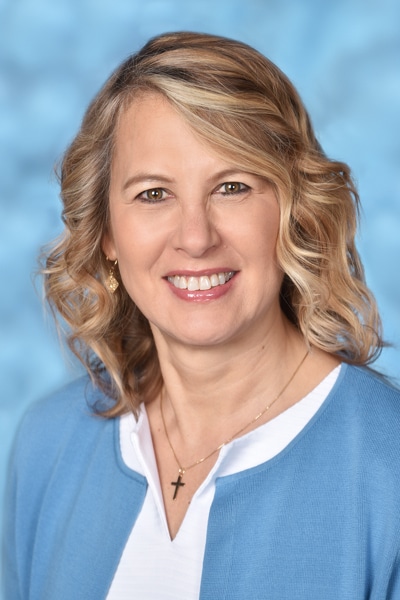At first glance, Heather Obora’s move into healthcare might seem like a massive change. Before joining Inova Health System as vice president of supply chain management in 2017, she’d spent nearly a decade and a half across roles as chief procurement officer of Chicago Public Schools and the Washington Metropolitan Area Transit Authority. But thanks to her powerful focus and perspective, Obora sees a single thread connecting these experiences quite clearly: each organization focuses on the public good, providing important services to people that rely on them.
“I want to be a part of helping people, so the healthcare industry was a natural fit,” she says. “Supply chain is actually closer to the bedside than people think.” By encouraging open communication and optimizing workflows, Obora is not only ensuring that the entire organization sees the department as essential in the healthcare process, but also making the best possible impact on patients’ well-being.

Beyond the philosophical ties between her leadership roles, Obora notes that there is an inherent similarity in the foundation of the roles. She sees her experience in the diverse array of accounting, contracting, sourcing, purchasing, and supply chain, among other subjects, as providing the background that Inova required. “My belief is that if you have those foundational tools, you can actually do the work anywhere, in any industry,” she says.
Employing that foundation, however, requires intensive integration with Inova’s large teams. The Washington, DC-area system encompasses 5 hospitals, more than 1,700 licensed beds, and more than 16,000 employees. That scope might be intimidating to some but, because she has worked in large and prominent organizations before, Obora brings a hands-on focus to the role and ensures that the rest of the organization does, too. “It’s easy for me to assist, troubleshoot, and work with my clinical leaders so that they understand what we do, and I understand what they need,” she says. “We can work together to make better strategic decisions that end up in better patient care.”
In addition to communicating on behalf of the department, Obora works to drive collaboration and interconnection for her team members as well. She consistently monitors the workflow to see where she needs to step in, make final decisions, or remove roadblocks that are hindering the department from providing the best possible solutions. An open-door policy and down-to-earth demeanor make that commitment to team-wide success apparent. “I don’t stand on pomp and circumstance,” Obora says. “I’m a full proponent of having more people involved in process and listening to more people’s opinions.”
The results of those open lines of communication have been remarkable. Recently, Obora’s team led an in-depth process of identifying which materials needed to be in store rooms at what times, and what materials were being purchased and going unused. To determine those needs, Obora followed a 5S process, in which her team and the clinicians sorted through the analysis of each item, line by line, to ensure that it accurately represented need. “Clinicians know based on their patient population on any given day or week what their material utilization is,” Obora says. “We used this process to streamline and reset.” The takeaways from that analysis led to a 20 percent reduction in storage inventories, which meant a significant financial savings for the system as well.
Once they’d determined the right power levels for each item, Obora’s team reorganized the storage rooms, utilizing a two-bin Kanban system—a process by which the inventory of each item is split among two bins. Once one of those bins is emptied, the visual cue signals the need to refill. Rather than waiting until a bin of fifty syringes is completely emptied, for example, clinicians would now be inspired to trigger a refill when only twenty-five of those fifty syringes had been used. Obora’s team would then ensure that any replenishment would happen that same day.
“Instead of guessing what we’re low on or what needs to be reordered, everything is automated through a handheld material management system and barcoding,” she says. “Between projects like that and a structural reorganization of people’s roles and responsibilities in our logistics department, we’ve made massive strides in turnaround time, response time, and stockout rate.” Although ensuring that all the right supplies are available for practitioners and patients is essential, the downstream value of reducing waste and driving savings is important as well.
Obora’s leadership philosophy relies on leveraging workflows with people, process, and technology all together. While a new barcoding system or invented Six Sigma process might be useful, logistics team members are encouraged to keep in communication with clinical leaders, to learn their challenges, and to understand their needs for materials. “Communication has gone a long way toward making the system more efficient,” Obora says.
This communication will lead to better work and better relationships with the rest of the system but, more importantly, better care for patients. At the end of the day, that’s the heart of every role in the system.
“I remind my team every day that while it might just seem like pulling materials off of a truck or restocking the store room, it matters every day,” Obora says. “If we make a mistake, it really can be life or death. I make sure my team walks the floors of the hospitals to see that their work is part of providing better care to these patients, people that are mothers, fathers, uncles, cousins, brothers, and sisters. We can also treat them like they’re our own family and they deserve to have the best care that we can give them.”

